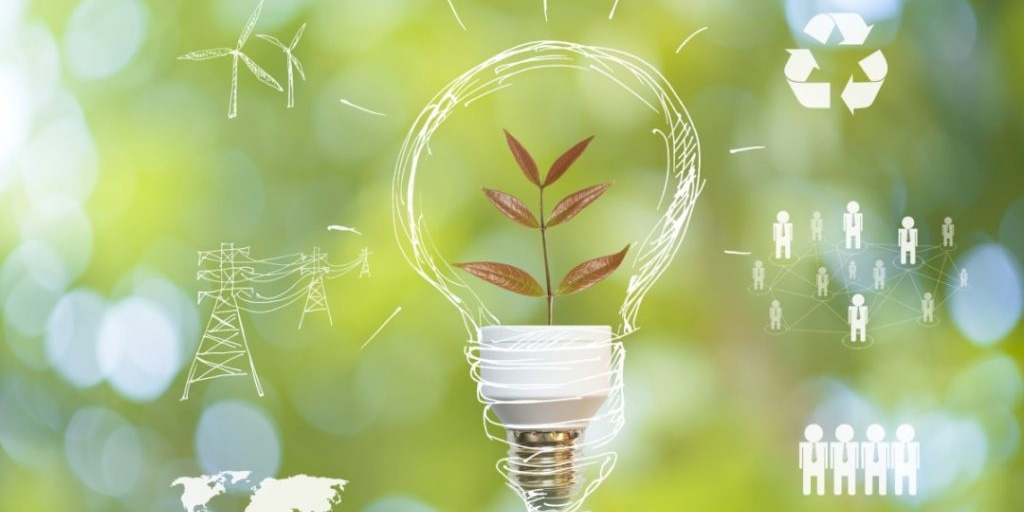Electricity
Electricity Market Participants
Electricity is a commodity that is traded on a competitive energy market. Like any other commodity, electricity is produced by its generators, purchased by intermediaries, and then sold to individual customers, companies, and institutions. And like any other commodity, it needs to be delivered from the producer to the customer.
1. Energy Producers in Poland:
System power plants, Currently, there are 19 so-called system power plants in Poland, where electricity is generated by burning lignite and hard coal. These plants produce 75% of the total energy consumed in the country. The largest of these power plants include: Bełchatów, Opole, Turów, Połaniec, Kozienice, Rybnik, and Dolna Odra.
Combined heat and power plants (CHP), where both electricity and heat are generated simultaneously. There are currently over 50 CHP plants located near larger urban agglomerations in Poland, such as the PGNiG Termika-owned Żerań CHP Plant in Warsaw and Kogeneracja in Wrocław. Industrial CHP plants are also located in the area of larger industrial facilities.
Renewable Energy Sources (RES), including hydroelectric power plants, wind sources (often grouped into several or a dozen units forming so-called “wind farms”), sources where electricity is generated as a result of biomass combustion, which is most often wood or plants grown for combustion, sources where electricity is generated by burning biogas, and photovoltaic sources.
2. Energy Trading Companies:
Companies involved in energy trading, known as trading companies, buy energy from producers and sell it to consumers. Prices and contract terms are individually negotiated between the selling company and the buyer.
3. Energy Transporters:
Due to the fact that losses associated with the transmission of electricity are inversely proportional to the voltage at which it is transmitted, electricity is transported via lines at the highest possible voltage. Drawing an analogy to road transport, transmission networks can be compared to highways connecting major cities (Power Plants, Main Supply Points – MSP), and distribution networks to national roads, which, turning off highways, lead to smaller towns and localities (energy consumers).
Electricity Transport Path:
- Transmission networks at 220 and 400 kV, which belong to Polish Electric Networks S.A., through which electricity is transported directly from power plants to so-called Main Supply Points (MSP),
- Distribution networks, at voltages from 230 V to 110 kV, which belong to energy distributors, through which electricity is transported from MSPs directly to end customers.
Distribution System Operators (DSO) manage distribution networks. In Warsaw, it is RWE Operator. Other DSOs are part of the four energy groups operating in Poland: Polish Energy Group, Tauron, Enea, and Energia.
4. Electricity Customers
Electricity customers in Poland include households, businesses, institutions, and other organizations. The energy sector in Poland is liberalized, meaning consumers have the option to choose their electricity supplier according to their preferences, both in terms of price and the source of energy.
Main groups of electricity customers in Poland:
- Households: The largest group of customers are households. Individual consumers use electricity to meet their domestic needs, such as lighting, heating, cooking, and operating electronics.
- Industry and Businesses: The industrial sector and various types of businesses are large consumers of electricity. Their energy needs are usually significantly higher than those of households, covering production areas, machines, and equipment.
- Industry and Businesses: The industrial sector and various types of businesses are large consumers of electricity. Their energy needs are usually significantly higher than those of households, covering production areas, machines, and equipment.
- Public and Educational Institutions: Schools, universities, hospitals, administrative offices, and other institutions use electricity to power buildings, lighting, medical equipment, and other needs.
- Services: Companies providing various services, such as banks, stores, offices, restaurants, etc., are electricity customers, using it to power electrical devices and maintain business functions.
- Agriculture: In agriculture, electricity is used to operate irrigation systems, ventilation, and various devices in farms.
- Other Industries: Various branches of industry, such as mining, chemical, metallurgical, and other sectors, are also key consumers of electricity.
In Poland, the electricity market has been liberalized, allowing competition among various energy suppliers. Consumers have the opportunity to choose their supplier, which can influence price competitiveness and commercial offers. This arrangement is beneficial for consumers, who can look for more attractive contract terms and more sustainable energy sources.































